Article Analysis Samples
-
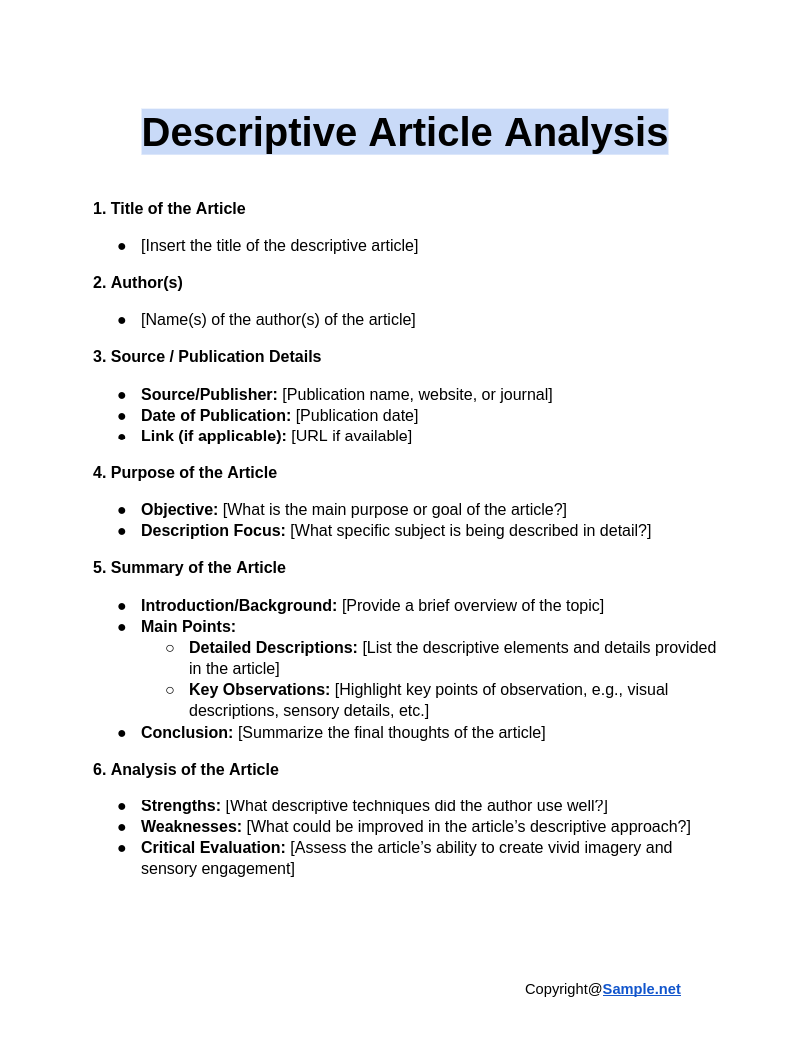
Descriptive Article Analysis
download now -
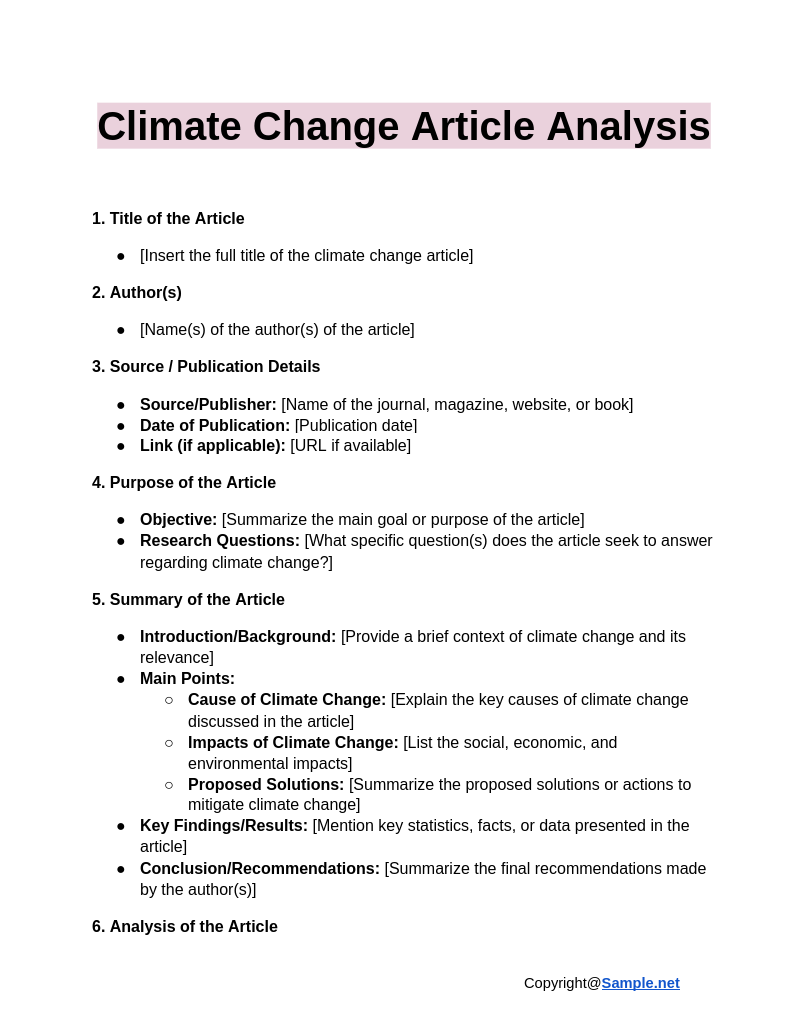
Climate Change Article Analysis
download now -
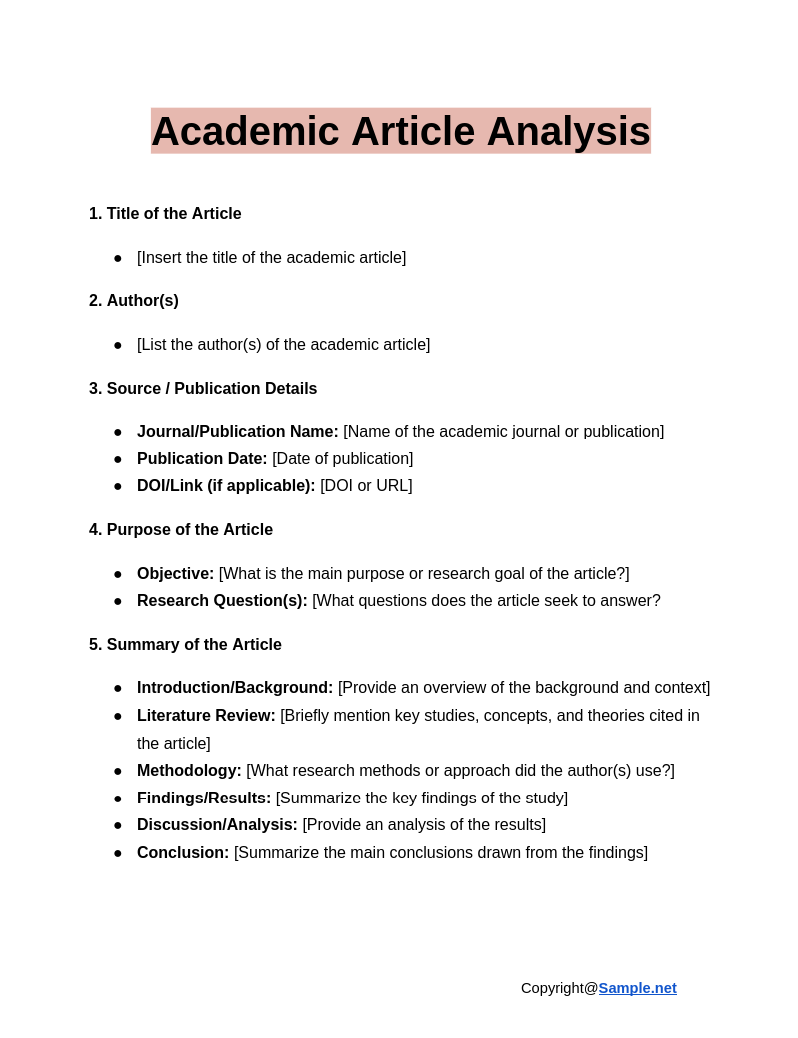
Academic Article Analysis
download now -
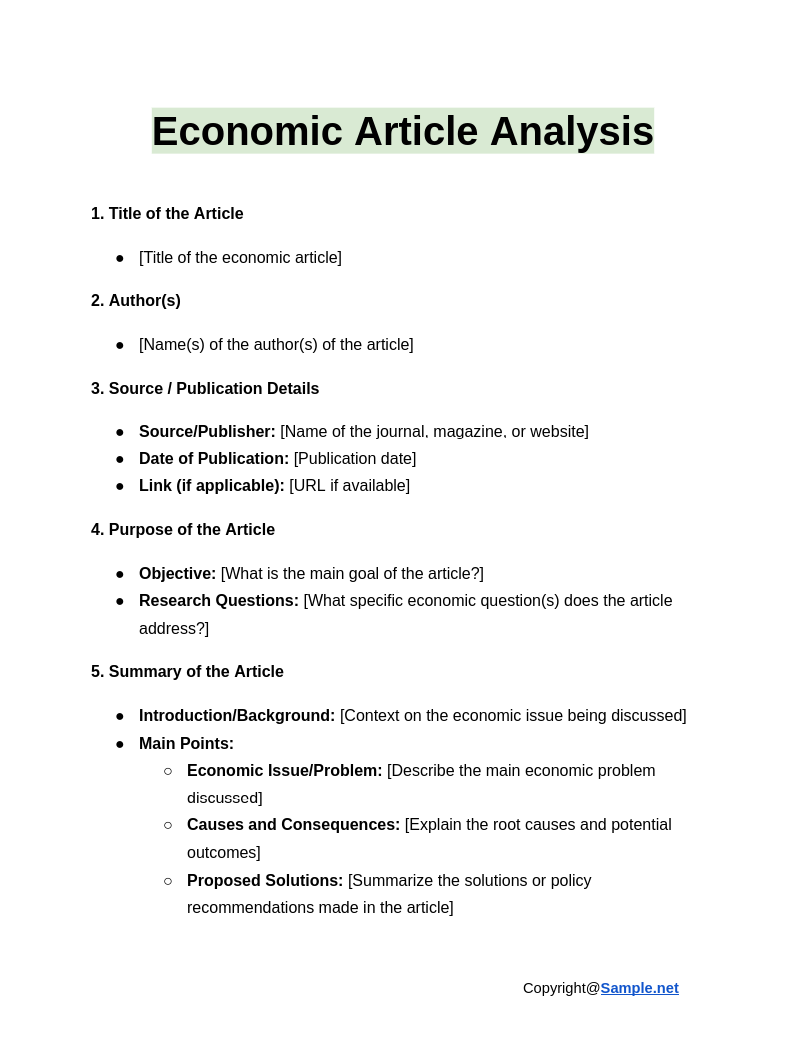
Economic Article Analysis
download now -
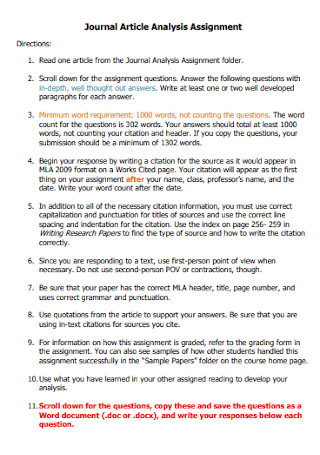
Journal Article Analysis Assignment
download now -
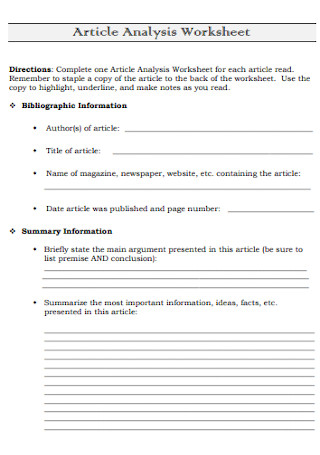
Article Analysis Worksheet
download now -

Article Analysis Essay Template
download now -
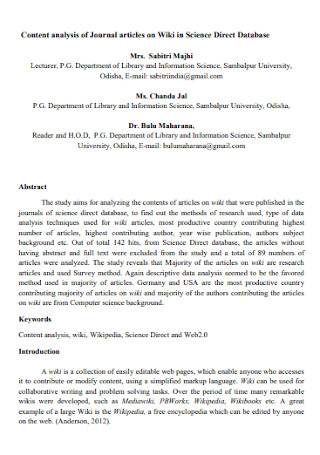
Content Analysis of Articles
download now -
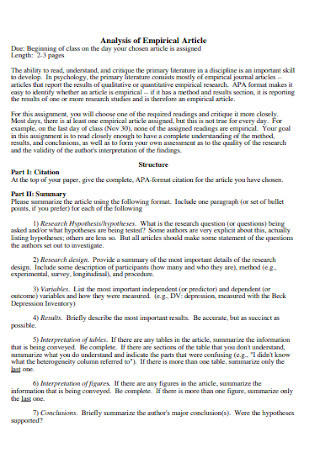
Analysis of Empirical Article
download now -
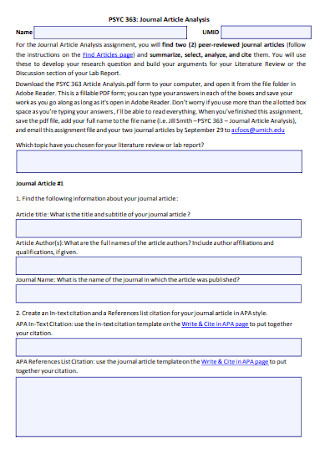
Journal Article Analysis Example
download now -
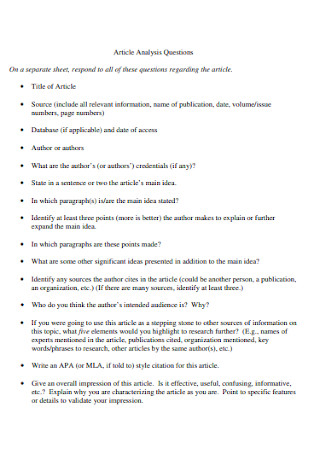
Article Analysis Questions
download now -
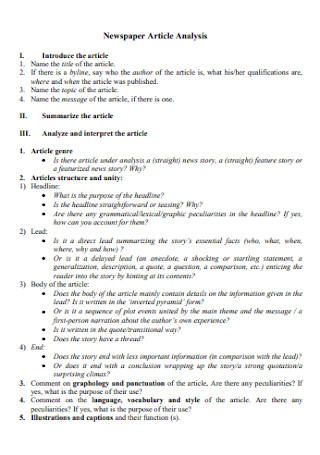
Newspaper Article Analysis
download now -
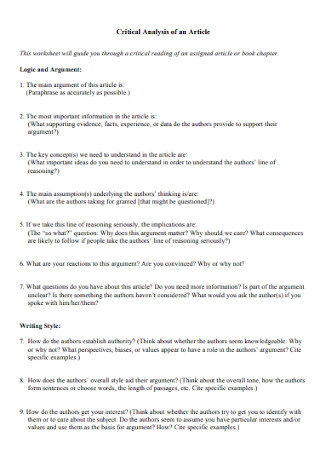
Critical Analysis of an Article
download now -
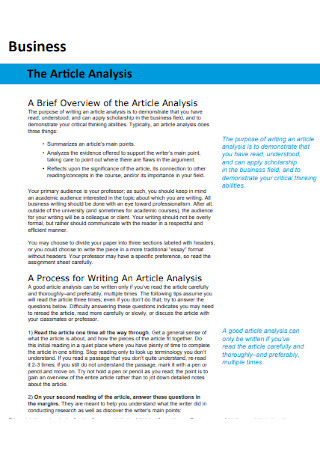
Business Article Analysis Template
download now -
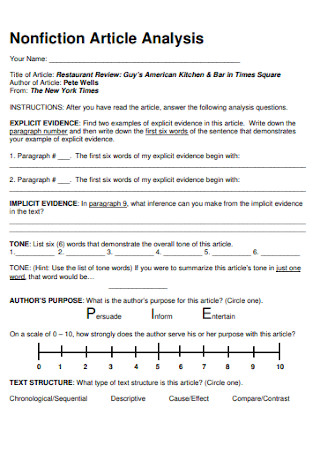
Nonfiction Article Analysis Template
download now -
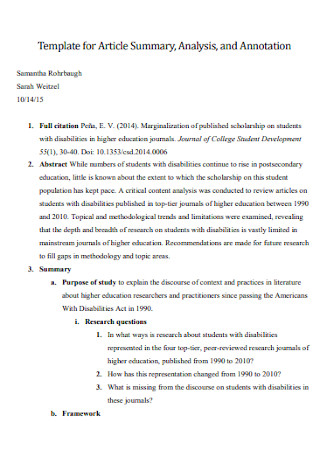
Article Summary Analysis Template
download now -
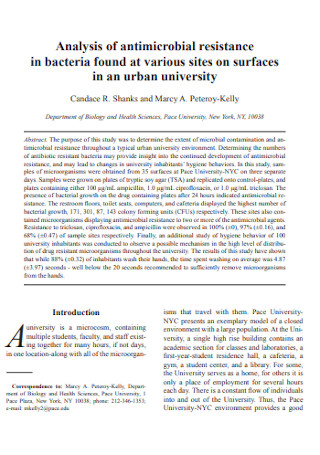
Article Research Analysis Template
download now -
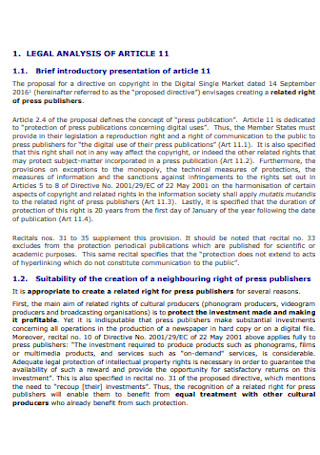
Legal Analysis of Article
download now -
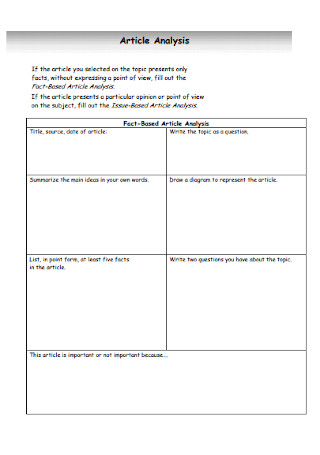
Sample Article Analysis Template
download now -
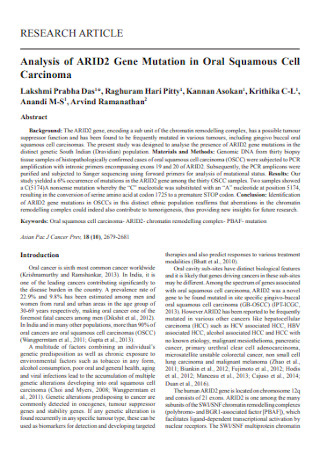
Research Article Analysis Template
download now -
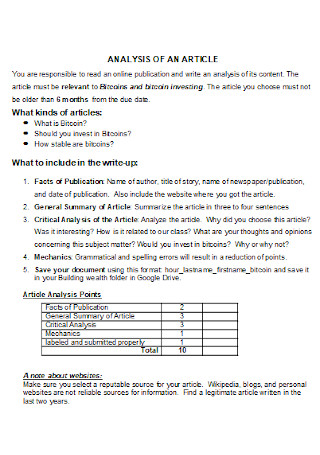
Basic Article Analysis Template
download now
FREE Article Analysis s to Download
Article Analysis Format
Article Analysis Samples
What Is an Article Analysis?
The Three Main Purposes of Writing
How to Create an Article Analysis
FAQs
What is APA format in article analysis?
What is MLA format in article analysis?
What does it mean to analyze an article?
How do I identify biases in an article during analysis?
What is the difference between article analysis and article summary?
How do I write an effective article analysis report?
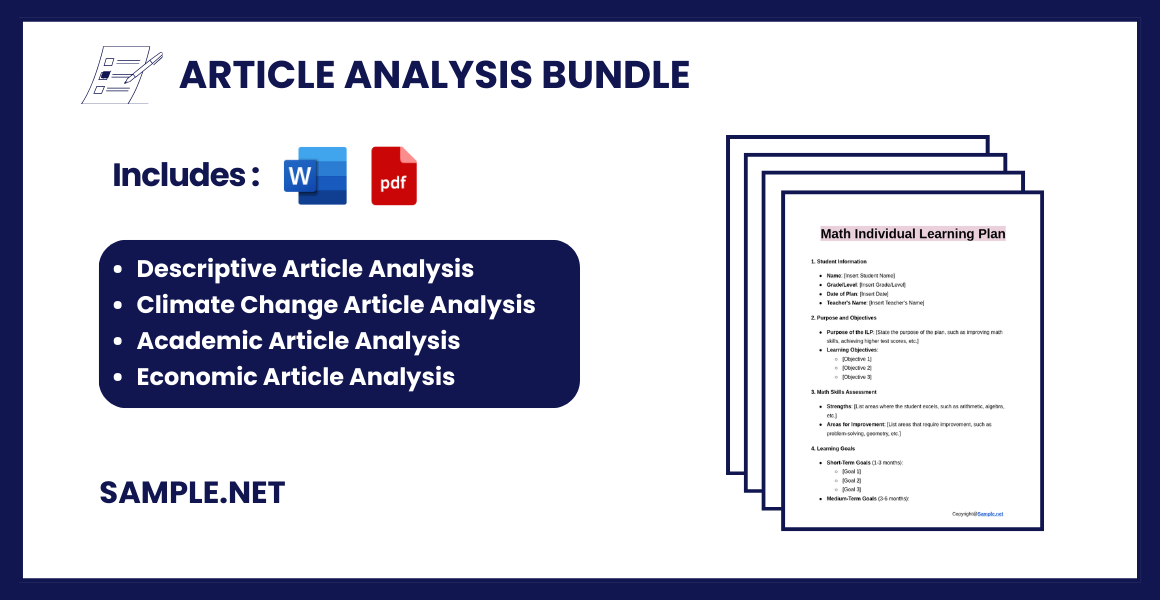
Download Article Analysis Bundle
Article Analysis Format
1. Title of the Article
- [Include the full title of the article here]
2. Author(s)
- [List the name(s) of the author(s) of the article]
3. Source / Publication Details
- Source/Publisher: [Name of the journal, magazine, website, or book]
- Date of Publication: [Publication date]
- Link (if applicable): [URL if available]
4. Purpose of the Article
- Main Objective: [Summarize the primary goal or aim of the article]
- Research Question (if applicable): [List the key question(s) the article seeks to answer]
5. Summary of the Article
- Introduction/Background: [Provide a brief introduction or context for the topic discussed]
- Main Points:
- Point 1: [Summarize the first main idea or argument]
- Point 2: [Summarize the second main idea or argument]
- Point 3: [Summarize the third main idea or argument]
- [Add more points as needed]
- Key Findings/Results: [List the most important results or discoveries mentioned in the article]
- Conclusion/Recommendations: [Provide a brief overview of the conclusion and any recommendations made by the author]
6. Analysis of the Article
- Strengths:
- [Identify and list the strengths of the article, such as strong arguments, evidence, clarity, etc.]
- Weaknesses:
- [List the weaknesses of the article, such as lack of evidence, bias, unclear language, etc.]
- Critical Evaluation:
- [Provide a critical review of the article, focusing on its relevance, credibility, and logic of arguments]
7. Relevance of the Article
- Relevance to the Field/Topic: [Discuss how this article contributes to the broader field or subject area]
- Application in Practice: [Explain how the knowledge gained from the article can be applied in practice or real-life scenarios]
8. Key Takeaways
- [List 3 to 5 major lessons, ideas, or insights gained from the article]
- [Key takeaway 1]
- [Key takeaway 2]
- [Key takeaway 3]
9. Personal Reflection / Opinion
- Your Thoughts on the Article: [Write a personal response to the article, such as your agreement/disagreement with its arguments, personal insights, or questions that arise from it]
- What Was Most Interesting: [Mention any specific part of the article that you found most compelling or thought-provoking]
10. Conclusion
- Overall Assessment: [Summarize the overall quality, impact, and importance of the article]
- Recommendation for Others: [Indicate whether you recommend others to read the article and why]
What Is an Article Analysis?
Essays, reports, stories, and other pieces of writing inside magazines, newspapers, and publications are referred to as articles. When breaking down an article’s elements, content, and structure becomes a concern, then an article analysis commences. In other words, article analysis refers to a written analysis report aiming to demonstrate how much one understands and applies the full content of a particular article. More so, expect three things to acquire in analyzing articles: (1) to summarize the central thought, (2) to support or argue with the writer’s point using critical thinking abilities, (3) and to contemplate with the article’s importance and key concepts.
Did you know that the total estimation for both print and digital US daily newspaper circulation was around 28.6 million during the weekdays in 2018?
Moreover, Statista surveyed in May 2017 that approximately 30% of ages 18-29 Americans do not read newspapers in print.
On the other hand, the estimated total revenue of the US magazine industry was about $28 billion in 2017.
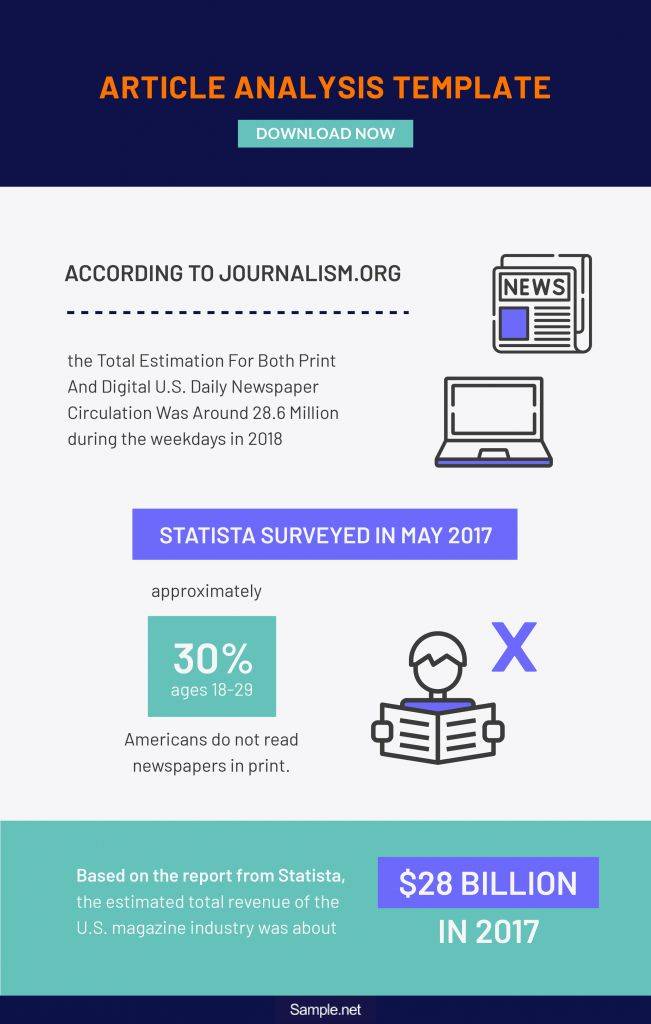
A Quick Look into the Origins of Writing
We are so quick to judge writings and articles nowadays while forgetting how much of a great invention it is when you look back into when writing began. From 3400 to 3300 BC, Mesopotamia contributed to the cuneiform as their official ancient writing system. More so, Egypt contributed hieroglyphic forms towards 3200 BC, whereas China, during the Shang dynasty, introduced their writing in 1300 BC. Eventually, different writing systems were introduced and have spread out to Mesoamerica, Indus River valley, and more. The best part is how the writing origins are still being studied continuously as the origin dates may change depending on discoveries. Despite the different cultures and histories involved, writing remains vital as a powerful tool to communicate and spread information worldwide. You can also see more on Case Study Analysis.
Article Analysis: Why Is It Important?
Indeed, the invention of writing helped in spreading the word anytime and anywhere, but spreading without critical analysis is a wrong move. In fact, all sorts of published posts do not automatically mean confirmed and well-researched. Trusting fake news articles can happen without putting some thought into what you have read. Hence, this reason is why article analysis exists. Besides reading an article, analyzing helps you comment on whether you support the details or make a different opinion out of it.
Through a sheet, an essay can be made as you point out every significant facet in a publication. Also, creating a summary helps you master the art of quick understanding rather than still needing long information to get the gist. Let us not forget that making your reflection is welcome in the analysis as well, which will be useful when teachers or scholars need your say about a particular topic. Lastly, the thesis and research plans benefit here. By delving further into some topics stated in an article, thinking skills are used to increase your understanding and come up with a conclusion.
The Three Main Purposes of Writing
Before proceeding to the steps of conducting an article analysis, be prepared to recognize the different purposes of writing first. Remember that in analysis, assume that your primary audience is a teacher. That way, adjusting your tone to an academic audience is necessary to maintain professionalism. However, being overly formal is discouraged too because in research, for example, other people will read as well. These people include students, colleagues, and other clients. As a guide in writing, identify the author’s writing purpose first, according to these three purposes:
How to Create an Article Analysis
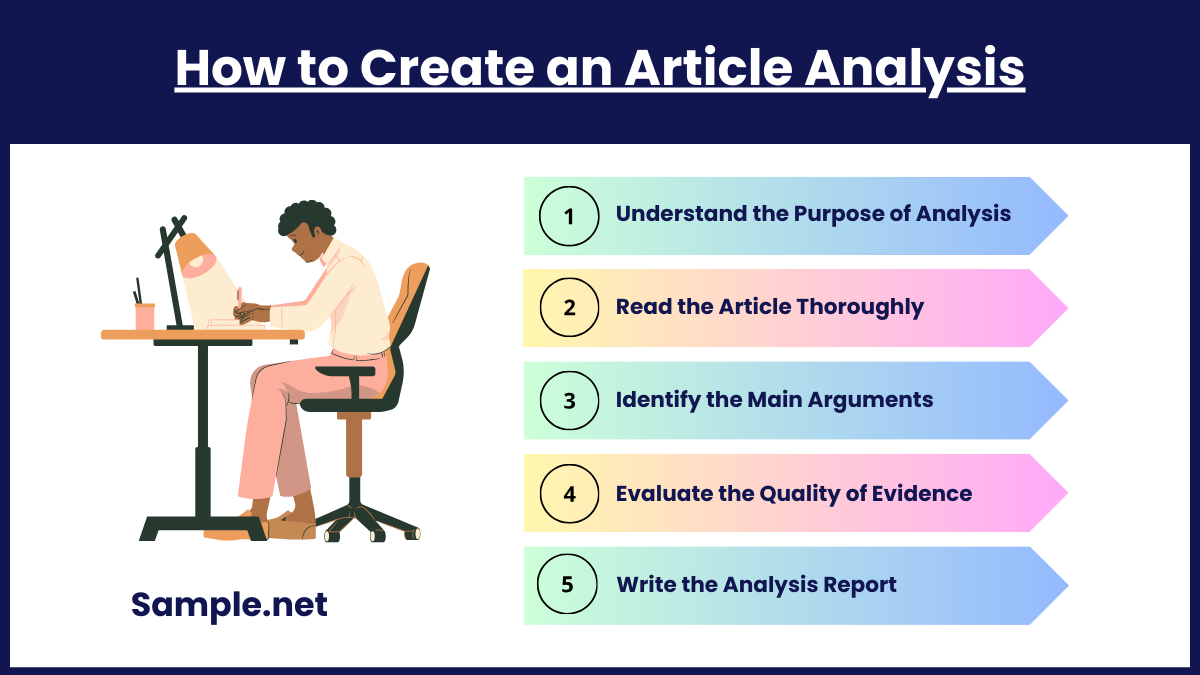
Step 1: Understand the Purpose of Analysis
The first step in analyzing an article is to define its purpose. Identify if your goal is to evaluate its credibility, summarize its content, or compare it with other works. Understanding the purpose will guide your focus throughout the analysis process.You can also see more on Literary Analysis.
Step 2: Read the Article Thoroughly
Read the article at least twice. The first reading helps you understand the general message, while the second focuses on identifying key arguments, supporting evidence, and potential biases. Take notes while reading to mark essential points for later reference.
Step 3: Identify the Main Arguments
Break down the article into its core components: the introduction, body, and conclusion. Identify the author’s thesis statement, key arguments, and supporting evidence. Pay close attention to how the author presents logical reasoning and connections between points. You can also see more on Argument Analysis.
Step 4: Evaluate the Quality of Evidence
Examine the quality, relevance, and reliability of the evidence provided in the article. Check if the sources are credible, if the data is up-to-date, and if the arguments are backed by sufficient evidence. Highlight any gaps, biases, or unsupported claims.
Step 5: Write the Analysis Report
Finally, summarize your analysis into a formal report or essay. Begin with an introduction, state the purpose, and provide a brief overview of the article. In the body, discuss the author’s key arguments, evidence, and strengths/weaknesses. Conclude with a critical evaluation and final verdict on the article’s credibility, logical flow, and value.
Article analysis is essential for critically evaluating scholarly works, professional reports, and academic content. It improves critical thinking, logical reasoning, and decision-making. By identifying key arguments, assessing evidence, and highlighting potential gaps, individuals can engage in meaningful discussions and scholarly critique. Effective article analysis requires a systematic approach, from understanding its purpose to presenting a formal evaluation. With practice, mastering article analysis enhances one’s ability to understand complex issues, question assumptions, and make evidence-based decisions. You can also see more on Summary Reports.
FAQs
What is APA format in article analysis?
APA format or American Psychological Association style is a format style used in documenting sources. Furthermore, fields in education, social sciences, and more depend on this style for research papers. In simple terms, expect to use the last name and the first initial in citing sources here. Moreover, APA has one indention while quoting around 40 words and more.
What is MLA format in article analysis?
MLA format or Modern Language Association style is another style of a format in writing sources. This style is useful in writing for college levels, particularly humanities. With MLA style, expect to use the full first and last name while citing sources. And, a date should follow at the end of such names. Additionally, MLA contains two indentions upon quoting four lines and more. You can also see more on Survey Analysis Report.
What does it mean to analyze an article?
To analyze an article means you come up with an essay wherein the audience understands the main thought without finding that much difficulty. This factor is why critical thinking matters in analyzing since analysts create judgments, summaries, and conclusions throughout the way.
How do I identify biases in an article during analysis?
To identify biases, analyze the author’s choice of words, tone, and perspective. Look for unsubstantiated claims, emotional language, or a one-sided presentation of facts. Identifying bias helps determine the article’s objectivity. You can also see more on Best Executive Summary.
What is the difference between article analysis and article summary?
An article summary provides a brief overview of the article’s main points, while article analysis critically examines the arguments, evidence, and logic of the content. Analysis involves deeper evaluation and critique.
How do I write an effective article analysis report?
Start with an introduction that explains the purpose of your analysis. Break down the body into sections such as arguments, evidence, strengths, and weaknesses. Conclude with a summary of your findings and final evaluation. You can also see more on Cost Analysis.
